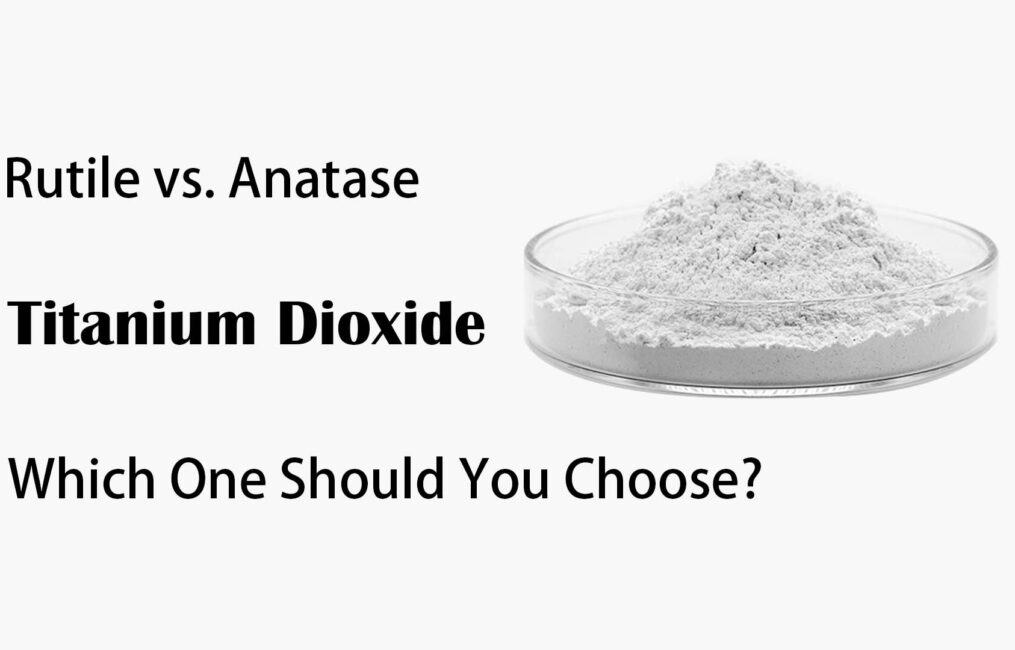Rutilo vs. Dióxido de titânio anatase: qual você deve escolher?
Descubra as principais diferenças entre o dióxido de titânio rutilo e o dióxido de titânio anatase nesta comparação detalhada. Aprenda sobre suas propriedades únicas, aplicações e qual tipo é mais adequado às necessidades do seu setor. Sejam revestimentos, plásticos ou cosméticos, este guia ajudará você a fazer a escolha certa para obter o melhor desempenho e custo-benefício.

Performance Comparison between Rutile Titanium Dioxide and Anatase Titanium Dioxide
Titanium dioxide (TiO₂) is an important inorganic pigment widely used in industries such as coatings, plastics, papermaking, inks, and cosmetics. Based on differences in crystal structure, titanium dioxide is mainly divided into rutile type (R-type) and anatase type (A-type). The two types exhibit significant differences in physicochemical properties, optical performance, and application fields. Below is a performance comparison between rutile titanium dioxide and anatase titanium dioxide:
1. Physicochemical Properties Comparison
| Propriedade | Rutile Titanium Dioxide (R-type) | Anatase Titanium Dioxide (A-type) |
|---|---|---|
| Crystal Structure | Elongated crystals, prismatic shape, dense structure, low photochemical activity | Approximately regular octahedral crystals, relatively loose structure |
| Thermal Stability | High, resistant to high temperatures (melting point 1850°C, boiling point 3200°C) | Lower, transforms into rutile type at high temperatures |
| Densidade | Higher (4.2-4.3 g/cm³) | Lower (3.8-3.9 g/cm³) |
| Hardness | Mohs hardness 6-6.5 | Mohs hardness 5.5-6.0 |
| Resistência às intempéries | Excellent, resistant to chalking and yellowing | Poor, prone to yellowing and chalking |
| Water Resistance | Excellent | Poor |
| Photochemical Activity | Low, good photostability | High, especially significant under UV light |
2. Optical Performance Comparison
| Propriedade | Rutile Titanium Dioxide (R-type) | Anatase Titanium Dioxide (A-type) |
|---|---|---|
| Índice de refração | 2.71, excellent hiding power and gloss | 2.52, slightly inferior hiding power and gloss |
| Brancura | Slightly lower | Higher, strong light scattering ability, appears whiter |
| UV Reflectance | Low, strong UV absorption, protects substrates | High, strong UV reflectance, high photochemical activity |
3. Application Fields Comparison
| Application Field | Rutile Titanium Dioxide (R-type) | Anatase Titanium Dioxide (A-type) |
|---|---|---|
| Coatings | High-end exterior coatings, decorative coatings, weather-resistant coatings | Interior coatings, low-cost coatings |
| Plásticos | Weather-resistant plastic products, enhances whiteness and brightness | General plastic products, increases whiteness and gloss |
| Borracha | Improves surface smoothness and color stability | Used in general rubber products |
| Paper | High-end paper, improves whiteness and gloss | General paper, enhances whiteness and print quality |
| Tintas | High-gloss inks | General inks, improves color vibrancy |
| Cosméticos | Used in high-end cosmetics, provides coverage and smooth texture | Used in general cosmetics |
| Other Fields | Ceramics, glass, batteries, etc. | Textiles, chemical fibers, tires, etc. |
4. Summary
- Rutile Titanium Dioxide: Offers excellent hiding power, gloss, weather resistance, and thermal stability. It is suitable for high-end coatings, weather-resistant plastics, and high-quality paper. Its high refractive index and strong UV absorption make it ideal for outdoor applications.
- Anatase Titanium Dioxide: Has higher whiteness and strong light scattering ability, but its weather resistance and thermal stability are inferior. It is suitable for interior coatings, general plastics, and paper where weather resistance is not a critical requirement. Its lower cost makes it suitable for price-sensitive applications.
Both types have their advantages, and the choice should be based on specific application requirements.



